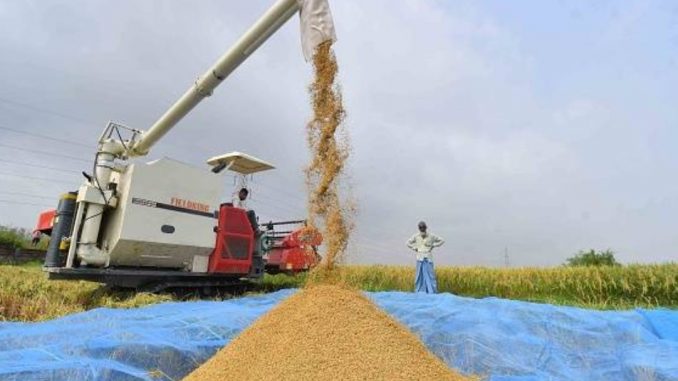
By Wandile Sihlobo, 25 Septembre, 2024
Disruptions in major grain supplies always give rise to fears of food insecurity.
In July 2023, India sparked fresh concerns as the world was adjusting to the disruptions caused by the Russia-Ukraine war on global grains supplies and prices. India placed an export ban on non-basmati white and broken rice.
Global rice prices rallied in the following months, as many were concerned about possible supply shortages. The worries were not misplaced; India accounts for roughly 26% of global rice production.
The rationale cited in media articles at the time was that India’s government was worried about inflation ahead of the upcoming elections.
Fortunately, there was a quick adjustment of supply chains. Other rice exporters such as Pakistan, Thailand, the United States, Vietnam, China, Cambodia and Myanmar had a good crop in the 2023-24 season, which helped to ease the fears and to avail the supplies.
We are far from that reality today — at least from the rice price levels.
The global rice prices have softened notably in recent weeks because of the expected ample global supplies.
Moreover, the news that India is likely to ease rice export restrictions as supply increases and elections have passed has perhaps also helped.
The rice prices from various origins have moderated significantly from the higher levels we saw last year — currently trading at levels of about $550 a tonne (as of August 2024), compared with levels of about $650 a tonne at the end of 2023.
We paid attention to the rice issue in South Africa throughout this period because of our dependence on rice imports. We rely 100% on imports. We consume about a million tonnes of rice annually. We can’t produce rice because of our relatively dry environment.
Thailand is the leading rice supplier to South Africa, accounting, on average, for 74% of rice import volume a year in the past five years. India is the second largest rice supplier to South Africa, boasting an average annual share of 21% over the past five years. Other rice suppliers to South Africa include Pakistan, Vietnam, China, Australia, the US and Brazil.
This reliance on imports means we should constantly monitor global price developments. Indeed, this time around, the rice price prospects look to continue softening because of good supplies and minimal trade disruptions.
The International Grains Council forecasts 2024-25 global rice production at 528 million tonnes, up 1% year-on-year.
There are expectations for a good harvest in India, Vietnam, Thailand, the US, Pakistan, China, India, Bangladesh and Pakistan, among others.
The expansion in area planted and favourable weather conditions are some of the factors behind the optimism about the global rice harvest in the 2024-25 season. The global rice stocks could also lift by 1% from the 2023-24 season to 176 million tonnes.
All else being equal, one can say that the coming months will probably see much better continuous moderation in global rice prices. Perhaps, if India can boldly lift the restrictions on exports sooner, we may even see more softening in prices.
This benefits importers such as South Africa. Moreover, the relatively less depreciated domestic currency will also help ease the costs of imported rice.
In the case of broader Southern Africa, where the white maize supplies are tight because of the recent mid-summer drought, the easing rice prices and ample supplies provide a better addition to the basket of staples. Still, at the retail level, the actual rice prices may remain relatively higher than some white maize products.
